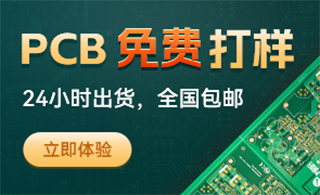用纳米粉制备厚膜敏感陶瓷材料
出处:蓝色魅力 发布于:2007-04-29 10:31:05
王梦魁1,王志凡1,刘文磊2 | |||||||
1Introduction With the development of sensing technology,people are more and more demanding about sensors,especially for fitting in computers,high property and miniaturized sensors. Thickfilm sensing materials have vast developing prospects,because the technology of making thickfilm sensing materials is easy to learn and a large scale production can be easily realized. In recent years,with the fast development of nanomaterial and nanotechnology,many technological puzzles can be readily solved. For instance,in the past,it was difficult to make Ba1-xSrxTiO3 base sensitive ceramics into low resistivity thickfilm material,but now they can be made into nanogranules,and the electric polarization strength of the material will be improved obviously. In this way,thickfilm material of low room temperature resistivity and excellent properties will surely be made. The way of preparing Ba1-xSrxTiO3 and(V1-xCrx)2O3 double base composite material with nanopowders was discussed in this study. 2Experimentsand measured results 2.1Preparing Ba1-xSrxTiO3 micro powders through chemical coprecipitation The materials for making Ba1-xSrxTiO3 micropowders were barium chloride(BaCl2),strontium chloride(SrCl2)and titanium chloride(TiCl4),oxalic acid was precipitant. The chemical equations were as follows TiCl4+(1-x)BaCl2+xSrCl2+2(H2C2O4·2H2O)+2H2O=Ba1-xSrxTiO(C2O4)2·4H2O+6HCl+H2O (1) Ba1-xSrxTiO(C2O4)2·4H2O+O2=Ba1-xSrxTiO3+4H2O+4CO2↑(2) The equations above were the theoretical basis for calculating the composition and operating the process when preparing the micropowders. The process was shown in Fig.1. The average diameter of the Ba1-xSrxTiO3 micropowders attained with this method was shorter than 05 μm when they were measured by Type WLP208 average granules measuring instrument. The distribution was shown in Fig.2. 2.2Preparing micropowders by adding dispersants and surface active agents Ba1-xSrxTiO3 micropowders made with the method mentioned above,appeared to be soft agglomeration,because it had been heated under 600 ℃. So the micropowders we got were not nanometer granules. In order to reduce and remove agglomeration,relevant measures must be taken. We think it is very important to choose and use surface active agents and disperstants properly. In this study,PEG and anhydrous ethanol were used as surface active agent and disperstant respectively. These two kinds of chemicals were used not only because they had better activation and dispersivity,but mainly because environmental protection and peoples health were taken into consideration,as anhydrous ethanol and big molecule PEG were harmless,safe to peoples health and without pollution to the environment. The experiment showed that the effect was pretty good. The process of preparing nanometer powders was shown in Fig.3. 2.3Preparing Ba1-xSrxTiO3 base blockshaped thermosensitive ceramics and V2O3 base blockshaped thermosensitive ceramics 2.3.1Preparing Ba1-xSrxTiO3 base PTC thermosensitive ceramics The formula we decided was:Ba084Sr016TiO3+04(mol%)Y2O3+005(mol%)Mn(NO3)2+01(wt%)Dy2O3. Ba084Sr016TiO3 nanopowders were made by ourselves,the samples of which were 7 mm×2 mm round slices. Two instructions were emphasized about the process:firstly,Y2O3 was added with other materials at coprecipitation,but Mn(NO3)2 and Dy2O3 were added after thermal decomposition(600 ℃)when ball milling;secondly,the samples were sintered at 1220~1240 ℃ for 05 h,the temperature rising speed was 350~400 ℃/h and the dropping speed was 100~150 ℃/h,when temperature fell to 1100 ℃,the samples were sintered for 1h,then they cooled down naturally to room temperature. 2.3.2Preparing V2O3 base blockshaped thermosensitive ceramics In this experiment,regular ceramics making process was used,V2O3 and Cr2O3 were blended according to the ratio:(V1-xCrx)2O3,0005≤x<0015. Here were main instructions:firstly,the mixture was presintered under the protection of argon gas at 1200 ℃ for 2 h;secondly,after presintering,the material powders were ball milled for 24 h with Type QM4H planetary ball mill,the liquid used in ball milling was anhydrous ethanol;thirdly,the samples were sintered under the protection of nitrogen gas or argon gas,then heat treated at 200~400 ℃ in oxygen atmosphere,so that their PTC properties could be restored. 2.4〓Preparing double base thickfilm sensitive ceramics The blockshaped Ba1-xSrxTiO3 base PTC ceramics and V2O3 base PTC ceramics were crushed respectively,sifted through 300 mesh sieve,ball milled for 24 h. When V2O3 base was ball milled,the liquid used was anhydrous ethanol;for Ba1-xSrxTiO3 base,deionized water and micro PEG were used. After ball milling,these two kinds of nanopowders were kilndried and then mixed according to a set ratio,finally made into thickfilm ceramic material through regular process of making thickfilm circuits(the equipment used was imported from the USA). The powders were sintered at 850 ℃ in nitrogen gas for 20 min. After cooling down,heat treatment was done at 400 ℃ for 20 min in air. Observed through scanning electron microscope(SEM),the surface of the thickfilm material we prepared was shown in Fig.4. 2.5Measured results The measured results of this thickfilm sensitive ceramics made of doublebase composite material were as follows:Curie temperature(TC)is 80 ℃±2 ℃;room temperature resistance value is 30~100 Ω(compared with using micropowders,the resistance is 100 times smaller);liftdrag ratio>105;temperature coefficient(αt)≥15%℃-1 and the breakdown voltage≥600 V,therefore,our expected goal was attained. Take sample 2# as an example,we explain the testing method here. First,under zero power,we measured the sample under different temperatures(T)and got corresponding resistance(R)values(shown in Table 1);then,we drew RT curve(shown in Fig.5);third,we tried to find the point on the RT curve corresponding to 91 Ω,which was double room temperature(25 ℃)resistance(455 Ω). The temperature corresponding to the point was 78 ℃,which was Curie temperature(TC). According to relevant documents[2],when Sr2+ is increased by 1(mol%),TC will drop by 25 ℃. In this study,Sr2+=16(mol%),so TC should be 80 ℃,but the result was 78 ℃,which showed that theory and practice fitted fairly well. Liftdrag=≈[3]≈71×105;temperature coefficient(αt)=log[4],according to Fig.5,the calculated result αt=18 %℃-1. Under room temperature,we exerted voltage to the sample gradually and got the puncture voltage 600 V. 3Discussion (1)The particular feature of preparing PTC ceramics with nanopowders of Ba1-xSrxTiO3 was that both presintering and sintering temperature were reduced. Just as mentioned above,thermal decomposition temperature(600 ℃)was the same as presintering temperature;sintering temperature was 1200~1240 ℃. Compared with using micron powders,the temperatures were reduced by 300 ℃ and about 200 ℃ respectively. So SiC can be used as exothermic body material to take the place of MoSi2. SiC can prolong the life of the kiln and the price is low,so remarkable economic and social results will be gained. (2)As known to all,when the size of a granule<50 nm,Van der Waals forces between molecules are very strong,and the granules form agglomeration[5]unavoidably. So surface active agents and dispersants must be properly added to make nanopowders with regular diameters. In this study,polyethylene glycol(PEG10000),whose formula weight is 10000,was adopted as dispersant. Thats because it is a sterically hindered high molecular polymer. When it is added to solution,it makes the longchain end of high molecular attracted on the surface of a granule,while the other end extends into solution,so as to reduce attractive forces between granules,and make steric hindrance stable[6]. The experiment shows that PEG is a kind of surface active agent at the same time. When noncharged high molecular polymer was added to the liquidoid,it was attracted by nanogranules and a layer of large molecule hydrophilic protective film was formed on the surfaces of nanogranules. This film was sterically hindered,preventing the nanogranules to grow agglomerate. Observed through transmission electron microscope(TEM),the diameters of nanogranules were between 30~60 nm,the distribution was shown in Fig.6. (3)In the last stage of preparing nanopowders of Ba1-xSrxTiO3,the powders were agitated in anhydrous ethanol,filtered and dried naturally. Thats because ethanol can replace water molecules between granules to reduce huge surface tension on the boundary surface of liquidoid during the drying process,so the aim of antiagglomeration is achieved[7]. (4)In the process of making thickfilm material,expensive RuO2 and silver powders are often added in order to eliminate nonohmic contact and reduce room temperature resistivity,but we used micro(V1-xCrx)2O3 instead. Not only the costs were cut down but also the room temperature resistivity was reduced. The accuracy and RT curve linearity were improved as well. So better effect was achieved. That was another feature of this study. (5)In this study,Y2O3 was not only the donor impurity,which made Ba1-xSrxTiO3 semiconductive,but also a kind of stabilizer[8],which stopped the grains from growing big and made the grains gain high density when the samples were sintered. 4Conclusion (1)PTC effect was formed during the course of temperature dropping[9]. So first,blockshaped PTC ceramics were made;then crushed into nano ceramic powders and made into thickfilm material according to a set of process(As related in 21~24 of the article). (2)Large formula weight PEG is a high property dispersant and surface active agent as well. Besides,it is not poisonous,so it is worth applying widely. References: [1]WANG D R. Dissolvent and Chemicals Production Composition and Synthetic Process[M]. Beijing:Scientific and Technical Documents Publishing House,2001,52. [2]XU T X. Electronic Ceramic Material[M]. Tianjin:Tianjin University Publishing House,1993,302. [3]WANG M K. A new way of preparing BaSrTiO3based PTC ceramics[J]. J Mater Sci Technol,2000,16(2):209-210. [4]WANG M K. The effect of mictodopant on the properties of PTC ceramics[J]. Journal of Functional Materials,1998,29(supplement):633. [5]CAO M S. A Guided Theory of Nanometer Materials[M]. Harbin:Harbin Industry University Publishing House,2001,160. [6]JIU J T. Preparation and application of agglomerationfree and nanoparticles zirconia[J]. Journal of Inorganic Materials,2001,16(5):868. [7]JIN X J. Preparation of ultrafine barium titanate powder by coprecipitation[J]. Journal of Inorganic Materials,2001,16(5):859. [8]ZHANG L D. Nanometer Materials and Nanometer Structure[M]. Beijing,:Science Publishing House,2001,175. [9]ZHOU D X. PTC Materials and Application[M]. Wuhan:Central China Science and Engineering University Publishing House,1989,120. | |||||||
本文摘自《微纳电子技术》 |
版权与免责声明
凡本网注明“出处:维库电子市场网”的所有作品,版权均属于维库电子市场网,转载请必须注明维库电子市场网,https://www.dzsc.com,违反者本网将追究相关法律责任。
本网转载并注明自其它出处的作品,目的在于传递更多信息,并不代表本网赞同其观点或证实其内容的真实性,不承担此类作品侵权行为的直接责任及连带责任。其他媒体、网站或个人从本网转载时,必须保留本网注明的作品出处,并自负版权等法律责任。
如涉及作品内容、版权等问题,请在作品发表之日起一周内与本网联系,否则视为放弃相关权利。
- cps是什么意思?cps的含义_cps的特征2024/4/16 17:56:11
- 你所知道的DCS系统都有哪些?2024/4/16 17:50:53
- 煤矿人员定位系统的功能及重要性分析2024/4/16 17:43:54
- 什么是冗余?2024/4/15 17:33:02
- linuxfind命令详解2024/4/15 17:27:22









